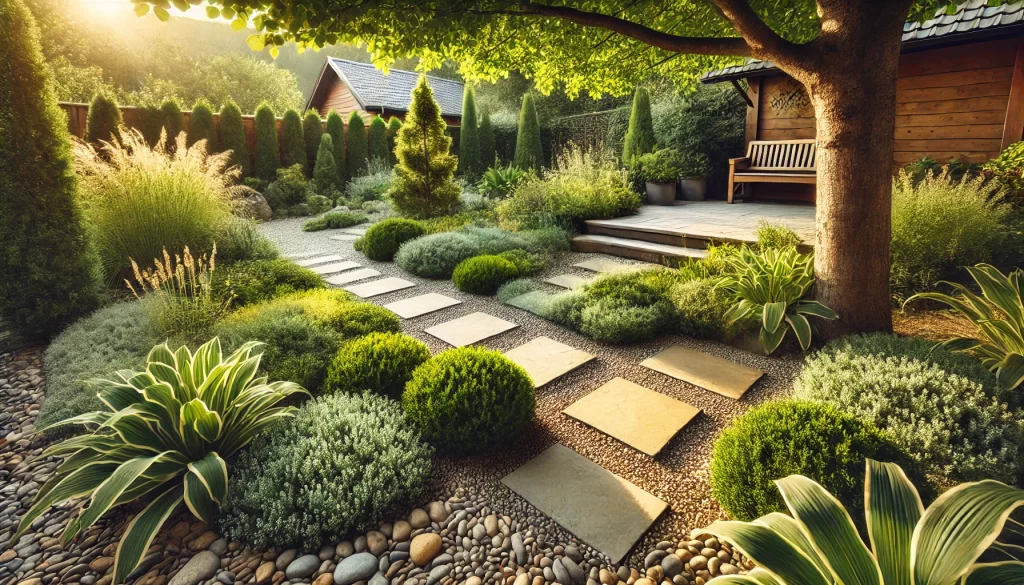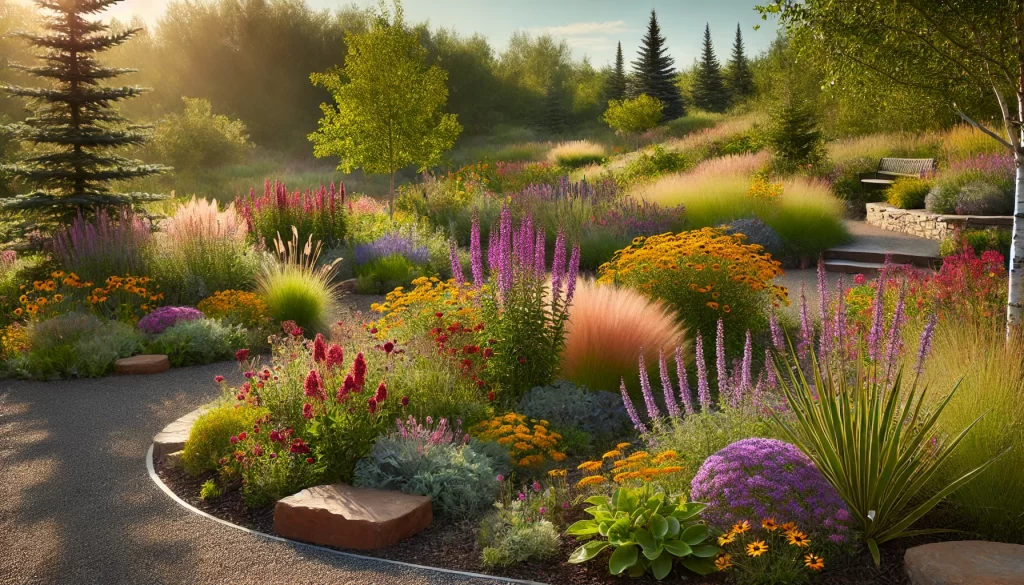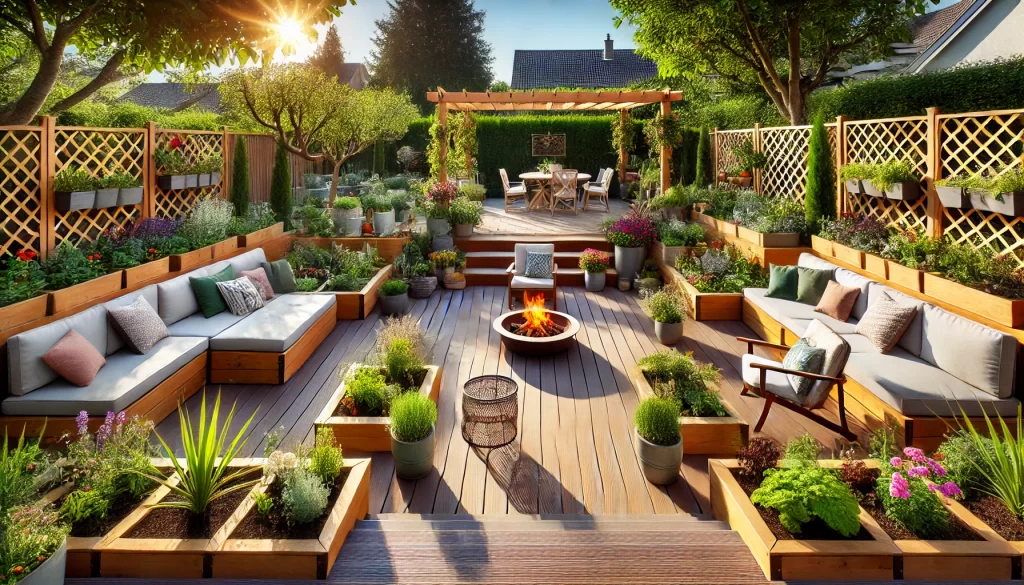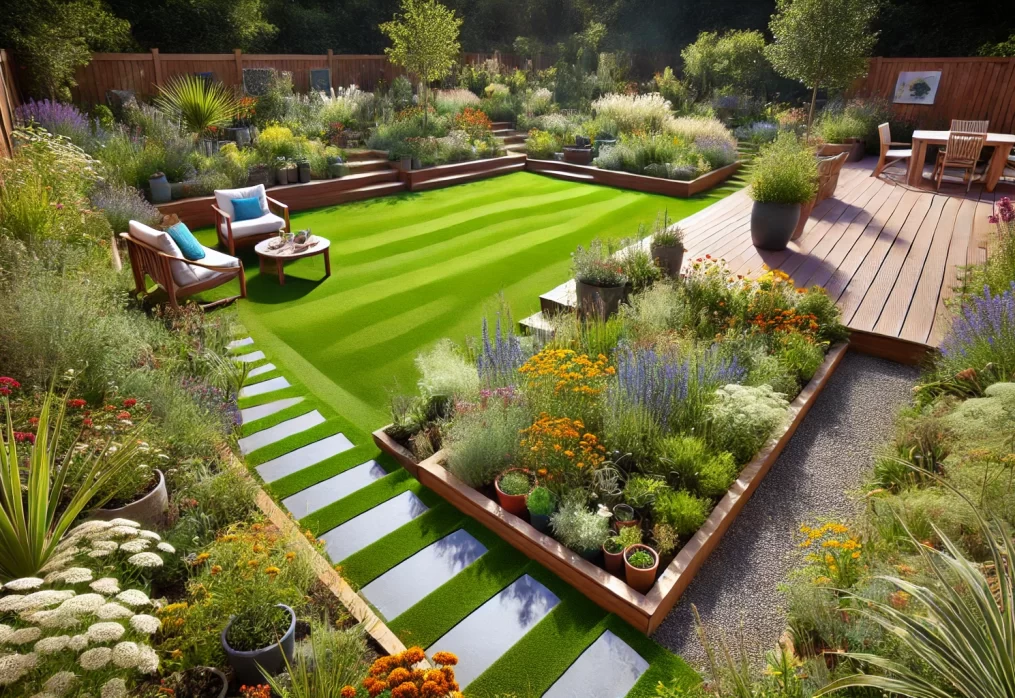10 Stunning Lawn Alternatives for a Low-Maintenance Yard
Introduction
A lush green lawn might seem like the quintessential dream for any homeowner, but the reality often includes high water bills, hours of mowing, and a list of environmental concerns. Fortunately, there’s no rule that says your yard has to be covered in grass. Lawn alternatives offer a way to transform your outdoor space into something equally, if not more, beautiful, while significantly reducing maintenance demands. Why consider lawn alternatives? First, they are environmentally friendly, often requiring less water, fertilizer, and pesticides than traditional grass. They also save you time and money in the long run. Plus, lawn alternatives can bring personality to your yard, with options ranging from vibrant ground covers to functional living spaces. In this article, we’ll explore 10 stunning lawn alternatives to inspire your next landscaping project.
Ground Covers as Grass Replacements
Clover: A Hardy and Eco-Friendly Choice
Clover, particularly microclover, is a fantastic alternative to traditional grass. Unlike a standard lawn, clover requires less mowing and thrives with minimal watering. It has a soft, cushiony texture that feels great underfoot and stays green throughout the growing season. As a nitrogen-fixer, clover naturally enriches the soil, reducing the need for chemical fertilizers. Another great perk? Clover is highly drought-tolerant and can outcompete weeds, meaning less effort on your part to maintain a pristine look. It’s also an excellent choice for pollinators, as its small white or pink flowers attract bees and butterflies.
Creeping Thyme: Aromatic and Attractive
If you’re looking for a low-growing ground cover that adds a pop of color and fragrance, creeping thyme is a top choice. This hardy herb spreads quickly, filling in bare spots with its lush foliage and tiny blossoms in shades of pink, purple, or white. It thrives in sunny spots, resists foot traffic, and is virtually maintenance-free once established. Creeping thyme is also great for erosion control, making it a suitable option for sloped areas. Its fragrant leaves release a delightful aroma when stepped on, adding a sensory element to your yard.
Hardscaping Solutions
Gravel and Stone Paths for a Rustic Look
Gravel and stone paths are among the simplest ways to replace traditional lawns while adding charm and utility to your yard. Gravel, available in various colors and textures, is easy to install and requires virtually no maintenance. It’s perfect for creating defined walkways or open spaces that can double as outdoor seating areas. Stone paths, on the other hand, lend a more polished, rustic appeal. Flagstone, slate, or cobblestones can be used to craft stunning pathways or patios. To soften the look, consider planting moss or creeping thyme in the joints between the stones. These accents create a seamless blend between hardscape and greenery while requiring very little upkeep.
From watering to lawn mowing and seasonal plant care, our gardener services make gardening completely hassle-free.
Pavers and Stepping Stones for Versatile Design
Pavers and stepping stones are ideal for creating clean, modern layouts in your yard. They come in a wide array of materials, from concrete to natural stone, and can be arranged in countless patterns to suit your design preferences. Pair them with pea gravel or decorative mulch for a cohesive and low-maintenance yardscape. Stepping stones can also serve as focal points, leading visitors through your garden or to a seating area. Their durability makes them a long-lasting alternative to grass, and they work well in both large and small spaces. You can add ground cover plants like sedum or Irish moss around the pavers to soften the edges and integrate them into the surrounding landscape.

Artificial Turf: Modern and Practical
Advantages of Artificial Turf
Artificial turf has come a long way in recent years, offering a realistic look and feel while eliminating many of the challenges associated with traditional grass. It’s an excellent solution for those seeking a low-maintenance yard that still offers the aesthetic of a lush lawn. Some benefits of artificial turf include:
- Water Savings: Artificial turf requires no watering, making it an eco-friendly choice in drought-prone areas.
- No Mowing or Fertilizing: Say goodbye to lawnmowers and fertilizers. Turf stays green year-round without the need for upkeep.
- Durability: It withstands heavy foot traffic, making it ideal for families with kids or pets.
Modern artificial turf also comes with drainage systems to prevent water pooling and is available in a range of textures and shades to suit your aesthetic preferences. Whether you want a vibrant green or a subtler tone, there’s a turf option for every yard.
Choosing the Right Turf for Your Space
When selecting artificial turf, it’s important to consider factors such as durability, texture, and intended use. For high-traffic areas, look for turf with a thick pile height and dense weave. If your yard is primarily decorative, a lighter, softer texture may suffice. Consider adding borders of natural elements like gravel, wood chips, or native plants to blend the artificial turf seamlessly into the landscape. Artificial turf pairs beautifully with hardscaping features, such as stone patios or walkways, creating a unified, low-maintenance design.
Native Plants and Wildflower Meadows
Benefits of Native Plants
Native plants are a fantastic lawn alternative, offering a way to create a beautiful and sustainable yard. Because these plants are naturally adapted to your local climate and soil conditions, they require far less water, fertilizer, and maintenance than non-native species. This makes them an eco-friendly choice that supports biodiversity and helps restore local ecosystems. Additionally, native plants attract pollinators like bees, butterflies, and birds, enhancing your garden’s ecological value. They come in a wide variety of colors, textures, and forms, so you can create a dynamic and visually appealing yard that changes with the seasons.
Creating a Wildflower Meadow
If you’re looking for a vibrant, low-maintenance alternative to a grassy lawn, consider planting a wildflower meadow. Wildflower meadows are not only stunning but also highly beneficial for the environment. They support local wildlife, improve soil health, and reduce the need for irrigation. To start, choose a mix of native wildflower seeds suited to your region. Prepare the soil by removing any existing turf and spreading the seeds evenly. Once established, your meadow will require minimal care—just a light trim once or twice a year to encourage new growth. A wildflower meadow works well in both large and small spaces, creating a whimsical, naturalistic look that complements a variety of landscaping styles. Pair it with a gravel pathway or stone seating area for added structure and functionality.

Functional Yard Alternatives
Edible Landscapes: Combining Beauty and Utility
Edible landscapes are an innovative way to replace a traditional lawn while reaping the benefits of homegrown food. By incorporating vegetables, fruits, and herbs into your yard design, you can create a space that is both functional and visually appealing. Raised garden beds, trellises, and espaliered fruit trees can add structure and aesthetic value while providing fresh, healthy produce. Popular choices for edible landscaping include:
- Herbs: Rosemary, basil, and thyme make great low-maintenance options.
- Fruits: Blueberry bushes, dwarf apple trees, and strawberries are attractive and practical additions.
- Vegetables: Kale, lettuce, and colorful Swiss chard can double as ornamental plants.
Mixing edible plants with flowers like marigolds or nasturtiums not only enhances the beauty of your yard but also provides natural pest control. With an edible landscape, every square foot of your yard serves a purpose—whether it’s producing food or supporting pollinators.
Outdoor Living Spaces: Decks and Patios
Transforming part of your lawn into an outdoor living space is another excellent alternative. Decks and patios extend your home’s usable space, offering a perfect spot for entertaining, dining, or simply relaxing outdoors. Materials such as wood, stone, or composite decking can be tailored to fit your design style, from rustic to modern. For added functionality, consider incorporating features like built-in seating, a fire pit, or even an outdoor kitchen. These elements make your yard a hub for family activities and social gatherings. Surround the space with potted plants, native shrubs, or a small water feature to create a harmonious balance between nature and structure. 
Maintaining Your Alternative Yard
Tips for Long-Term Care
Switching to a lawn alternative may reduce maintenance compared to traditional grass, but it’s important to implement some sustainable practices to keep your yard looking its best. Here are a few key tips:
- Water Wisely: Even low-maintenance options like ground covers and native plants may need occasional watering during dry spells. Use drip irrigation or soaker hoses to deliver water efficiently.
- Weed Control: Mulching around plants and in pathways can help suppress weeds while conserving moisture. Regularly pull any unwanted growth to keep your yard tidy.
- Seasonal Pruning: Many alternatives, such as creeping thyme or wildflower meadows, benefit from seasonal pruning. A quick trim in late winter or early spring encourages healthy growth.
- Inspect Hardscaping: Over time, pavers, gravel paths, and artificial turf may shift or accumulate debris. A seasonal checkup ensures these features stay functional and attractive.
- Amend Soil as Needed: For edible landscapes or native plant gardens, occasionally test your soil and amend it with organic compost to keep plants thriving.
Sustainable Practices for Eco-Friendly Maintenance
Maintaining an alternative yard can align with your environmental goals by incorporating sustainable techniques:
- Composting: Use plant clippings and organic kitchen waste to create compost, which enriches your soil naturally.
- Integrated Pest Management: Attract beneficial insects like ladybugs and bees to minimize pest issues without using chemicals.
- Permeable Surfaces: Use permeable materials for pathways and patios to prevent water runoff and promote groundwater recharge.
By staying proactive with care and using eco-friendly practices, you’ll not only save time and resources but also contribute positively to the environment.
Conclusion
Replacing a traditional lawn with stunning alternatives opens up a world of possibilities for transforming your yard into a low-maintenance, eco-friendly oasis. From vibrant ground covers like clover and creeping thyme to practical solutions like artificial turf and edible landscapes, the options are endless. Incorporating hardscaping elements, native plants, or even wildflower meadows adds diversity and personality while reducing water usage and upkeep. As you consider these lawn alternatives, remember that maintaining your new yard can be both sustainable and straightforward. With thoughtful planning, your outdoor space can become a haven for relaxation, biodiversity, and even fresh produce. So why stick with grass when there are so many creative, low-maintenance options to explore? Take the first step today, and reimagine your yard with one of these stunning lawn alternatives. Your landscape—and the planet—will thank you!
Contact Us Today!
Ready to transform your lawn? Contact Balaji Nursery today at www.balajinursery.org or call us for a consultation at 9354173113 / 8766234417 Let us help you create the lawn of your dreams!
Last Updated on 4 months ago by Anjali Mehra Ph.D. in Horticulture (Punjab Agricultural University)
- Why Lawn Grass Fails After Installation (Real Indian Case Studies) - December 25, 2025
- Nilgiri Grass vs Korean Grass – Price, Look & Maintenance Compared - December 23, 2025
- Delhi Pollution & Dust-Proof Lawn Care Guide - December 20, 2025
